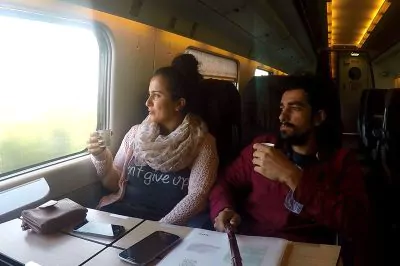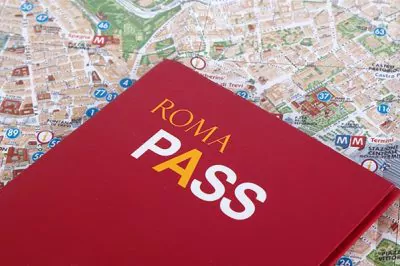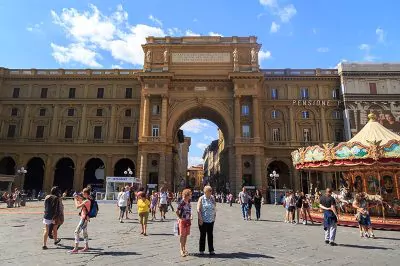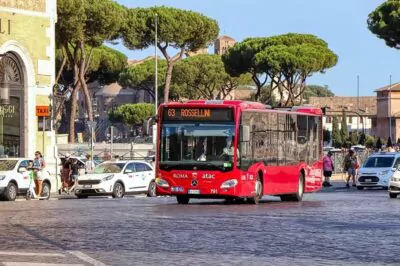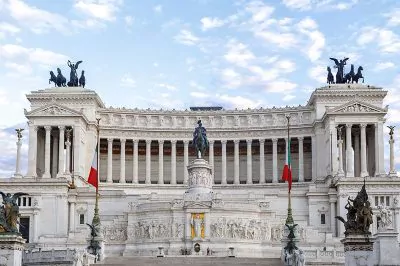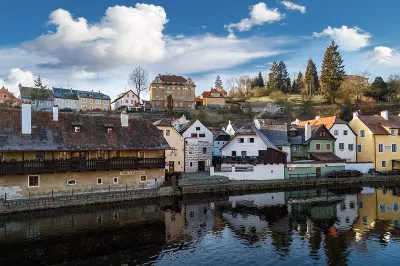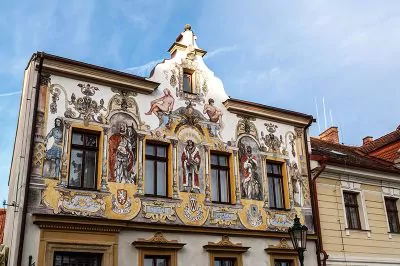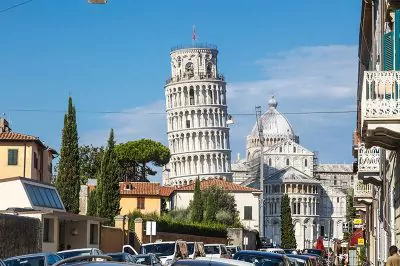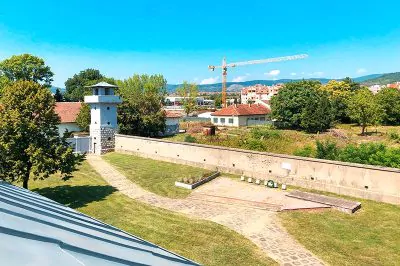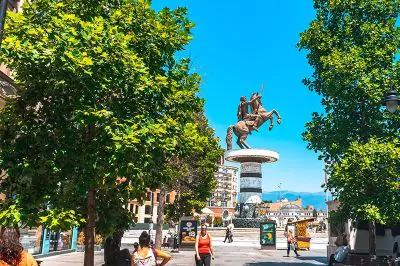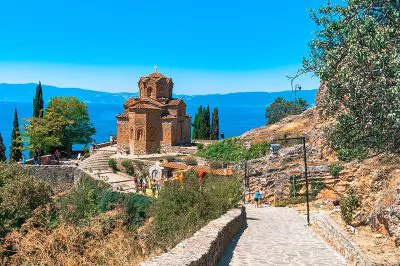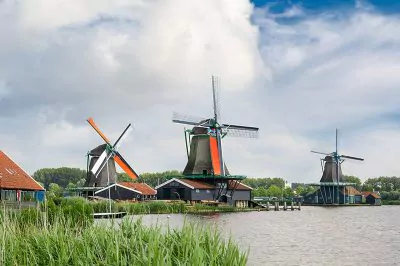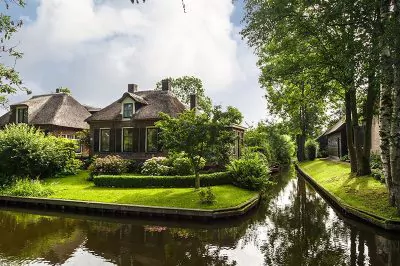Best 4 Day Itinerary in Rome, Italy: What to Do in Rome
Rome is one of the only cities saturated with sculptures, paintings and architectural art, where you will witness much more of history than you think at every step. Even though the glorious Roman Empire is over, it meets millions of visitors every year who come to live its memories. Rome, a city in the Lazio region of Italy, is also the cultural capital of the world.
We spent four days in Rome during our Italy tour, because there are many places to visit in Rome. We have compiled Rome guide and Vatican guide travel articles for you step by step.
Rome Itinerary: Day 1
Four Fountains
The four fountains at the intersection of Via del Quirinale and Via delle Quattro Fontane are worth seeing. Built between 1588 and 1593, the fountains are called Quattro Fontane and depict various characters, especially the river god Tiber.
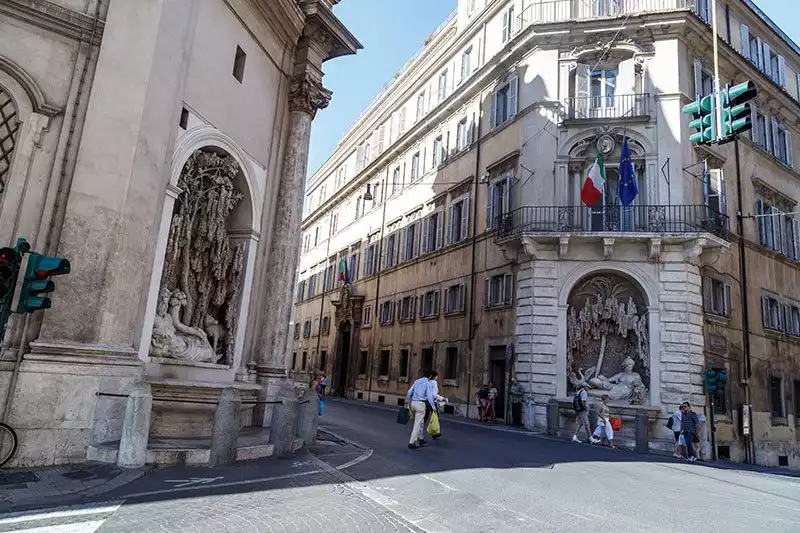
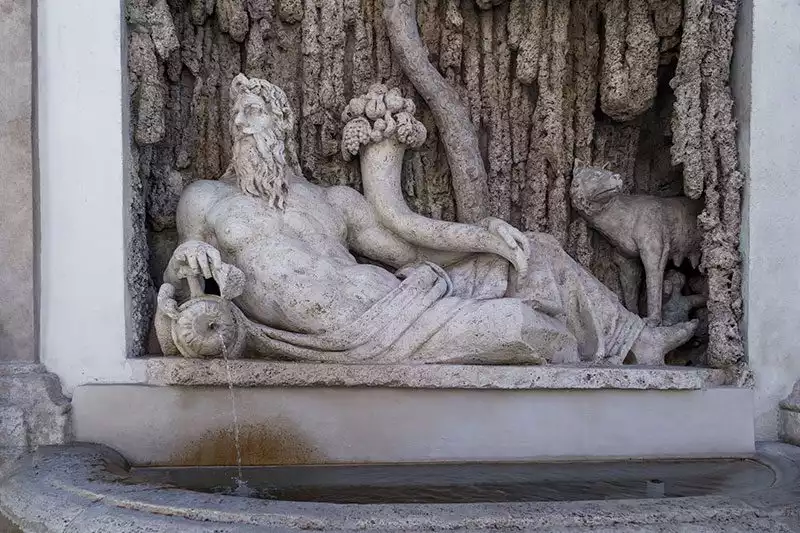
On the right-hand side of Via delle Quattro Fontana is the palace of the rich and noble Barberini family. Today it is an art gallery with a large collection of works by many famous painters, including Raffaello, Fornarina and Caravaggio. The most famous work of the museum is the giant fresco Allegory of Divine Providence and Barberini Power (Triumph of Divine Providence) by the Italian artist Pietro da Cortona. In the hall where you can’t get enough of looking at this work, they even put poufs where you can lie down so that your neck doesn’t get tired.
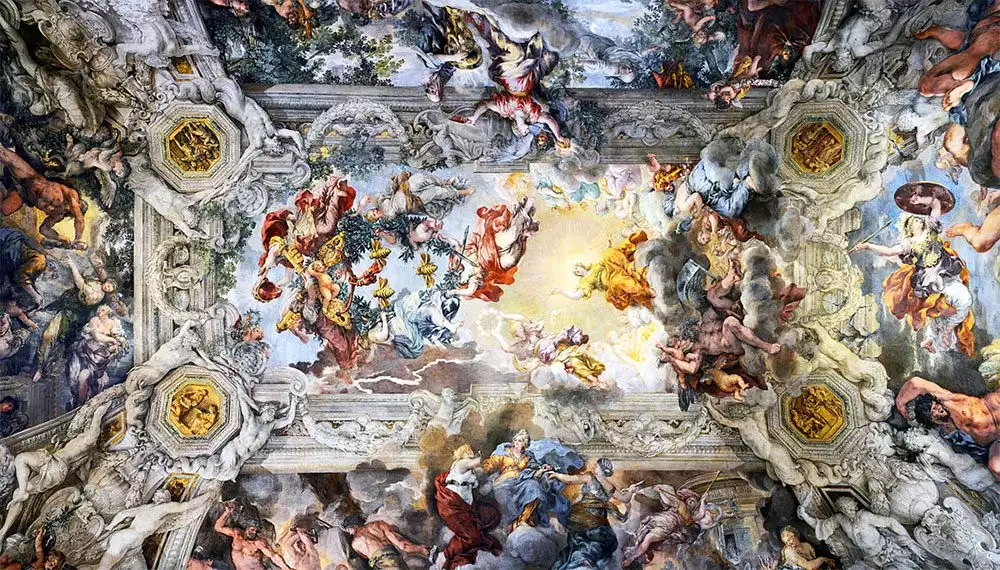
The museum is quite big. However, since the palace is in high demand, you can buy your ticket online instead of waiting in the long queues in front of it. Barberini Palace is of course very beautiful and if you are interested in paintings, don’t miss it.
Palazzo delle Esposizion
After seeing the fountains, we stop by Palazzo delle Esposizion on Via Nazionale to see the exterior. This palace is also used as an art gallery. It is a really big building, there is even a movie theater inside.
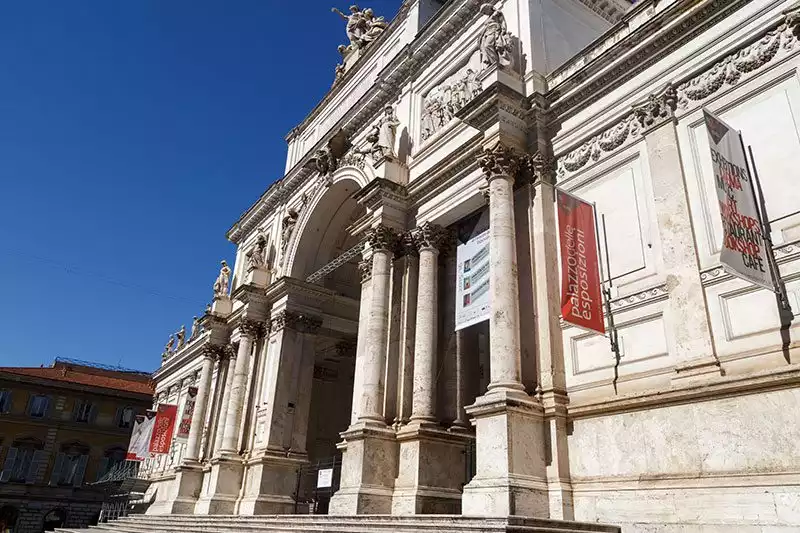
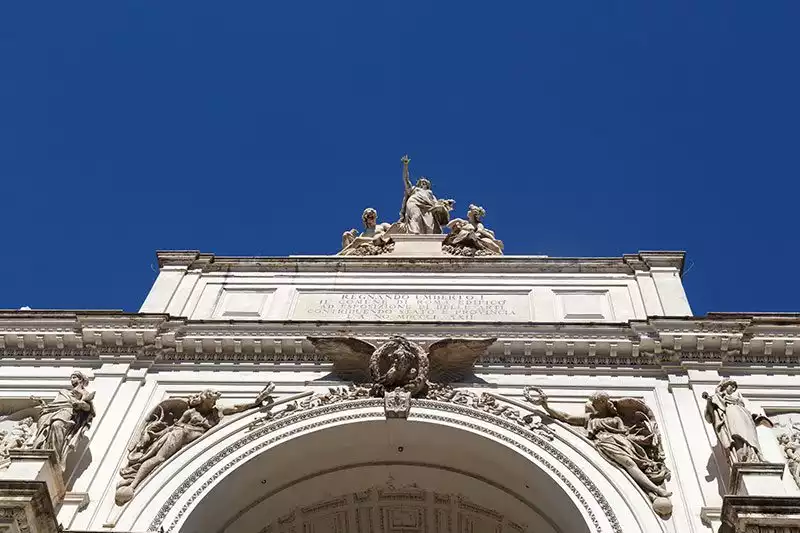
Piazza del Quirinale
Let’s continue on our route. We are in Piazza del Quirinale square, where the palace where the leader of the time stayed during the papal, royal and now republican periods is located. This is one of the seven hills of Rome. Since there is not much to spend time here, we continue down the stairs in front of the palace.
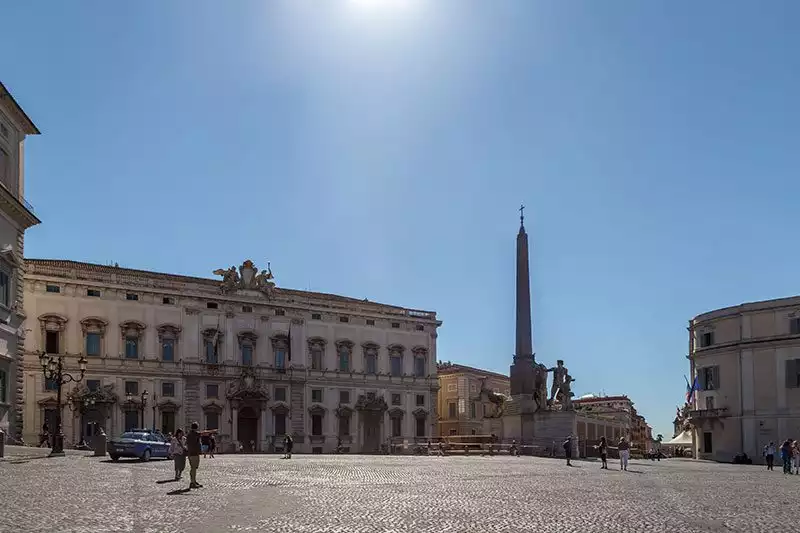
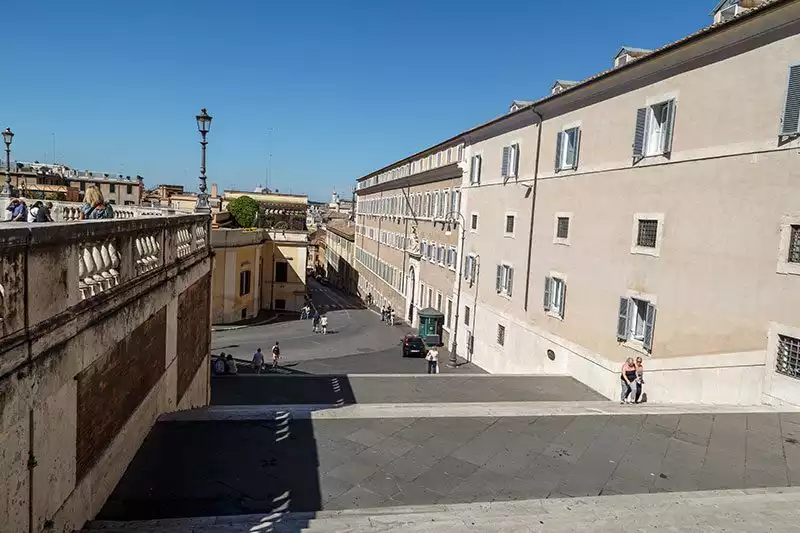
Continuing on Via della Dataria and towards the end of Via di S. Vicenzo street, we go to the Trevi Fountain, which has become a symbol of Rome. Although it is located in a small square, the Trevi Fountain is very crowded. There are many people here, from those who take photos in front of the Trevi Fountain to those who make a wish by throwing coins. Since it is crowded, you should take care of your bag and wallet.
Piazza Colonna
We are in Piazza Colonna, very close to the Trevi Fountain and the residence of the Italian Prime Minister. The monument that made this place famous is right in the center. The Column of Marcus Aurelius was erected after the Roman victory. The reliefs on it depict his battles and victories.
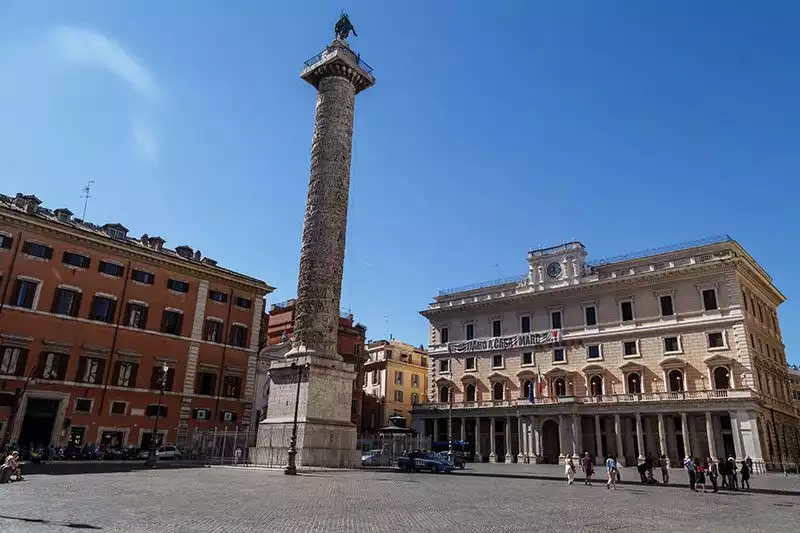
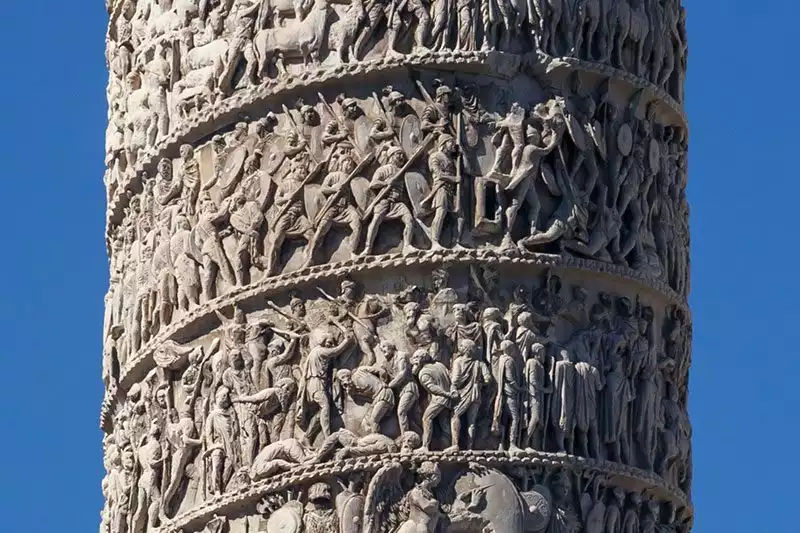
Spanish Steps
Our next stop is another famous square in Rome. But before we go here, while the sun is still up, we move to the Spanish Steps, which you may have heard of, so that we can see the city of Rome from above.
The Spanish Steps is nothing more than a small square, stairs and a church at the top. However, for those who like rich shopping, we can say that the most famous shops are here. However, it is more appealing for us to go up the stairs and feel the beauty of the city. You can also enter the church for free if you want.
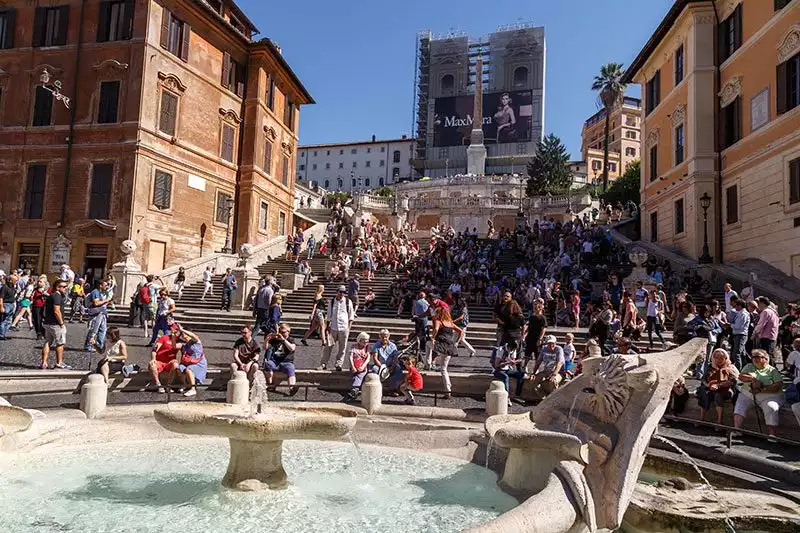
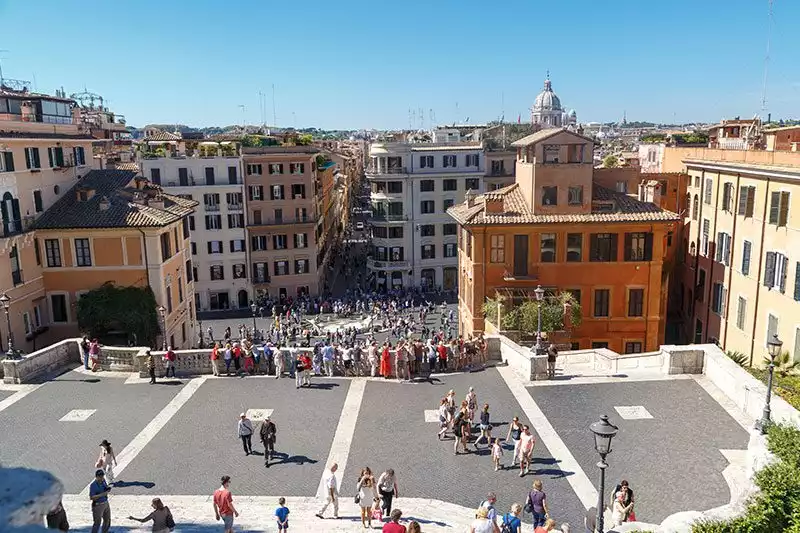
Piazza del Popolo
After a while, we make our way from the Spanish Steps to Piazza del Popolo, arriving at sunset. When you continue straight north from the Spanish Steps, you will come across Piazza del Popolo, the largest square in Rome. With its three churches, entrance gate, obelisk and fountains on both sides, it is enough to express the grandeur of Rome.
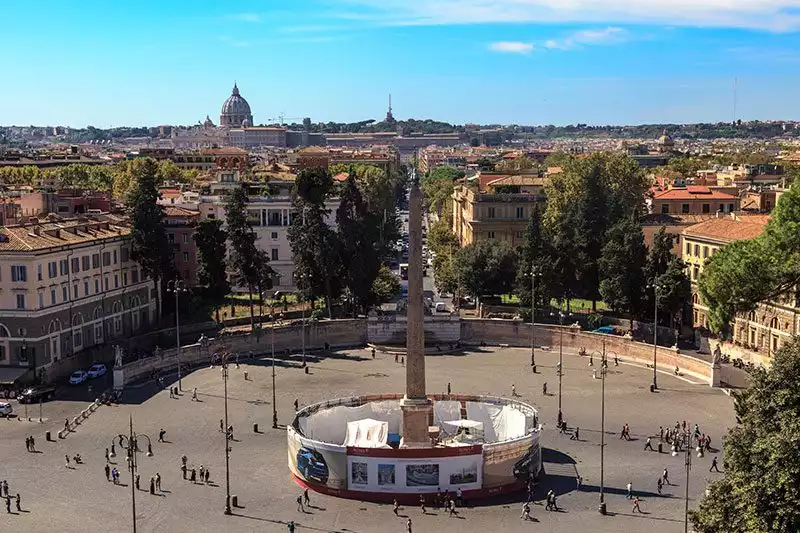
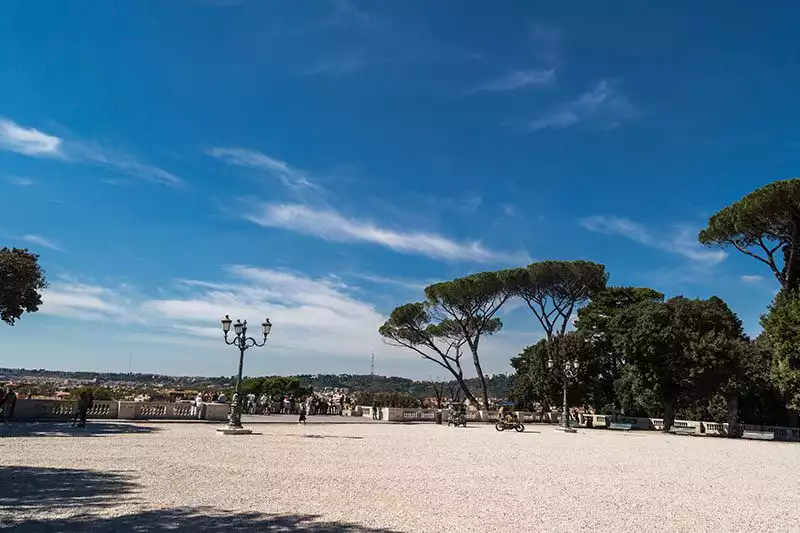
When you enter Piazza Popolo, it is time to visit the Pincio gardens behind the fountain on the right. Go up there and see the width of Piazza Popolo from the top. You can dive into the greenery behind and see a new obelisk.
A beautiful walkway awaits you afterwards, and if you go much further you can reach the Borgese Gallery. The Pincio gardens are an extension of the building that used to be a villa and is now a museum. Of course, we are not going that far now.
Pantheon Temple
I said don’t go too far, because we are going to see the Pantheon, one of the oldest buildings in Rome. Located in Piazza della Rotonda, the Pantheon is a great work that led the buildings of its time. Built for all the gods in ancient times, it is now used as a church. Be sure to go inside the Pantheon and see this masterfully designed piece of architecture from the inside.
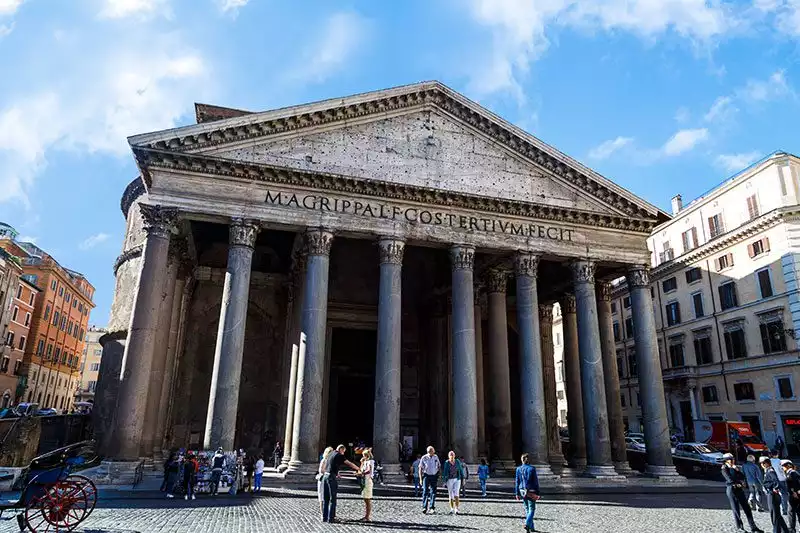
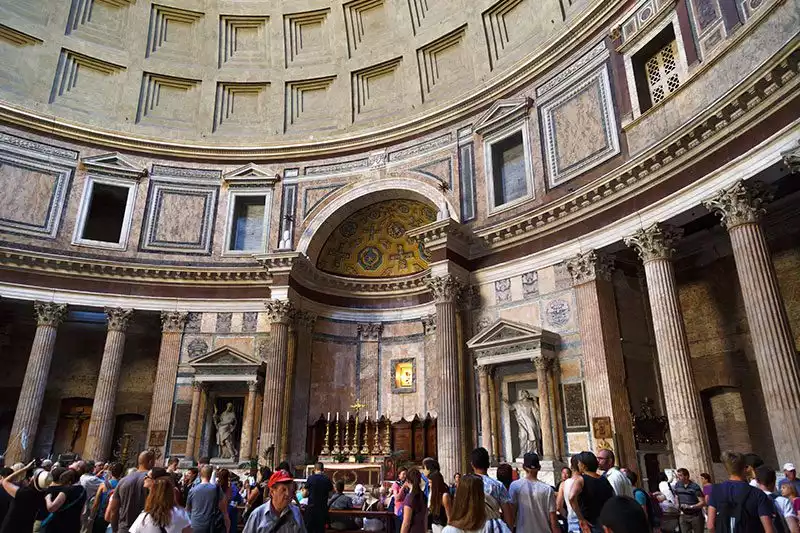
Line up in Piazza Navona, the square closest to the Pantheon. Formerly used as an ancient stadium, the square took its current appearance with the administration in the 17th century. The square is one of the most lively squares in Rome. In the center of the square, there is a fountain by Bernini, whose signature is on many of Rome’s buildings. On both sides of this fountain are fountains built in the same period. You can enter the large Church of Sant’Agnese in Agone in the square.
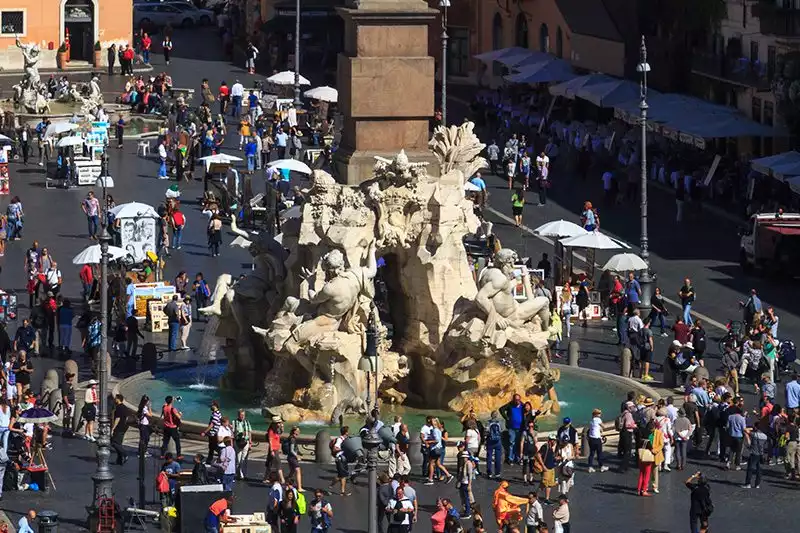
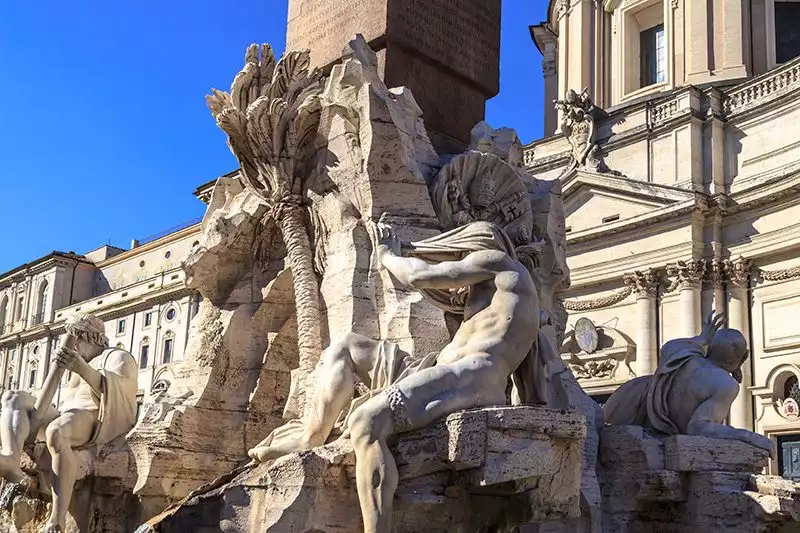
St. Peter’s Basilica
It’s time to go to the Vatican, a different country in Italy. Vatican City is not a place to visit in a short time, but since we want to visit many places, we will visit a small part of Vatican City today. Let’s cross the bridge called Ponte Sant’Angelo. Let’s continue to the left in front of Sant’Angelo castle. About 1 km ahead you will already see the huge domed basilica of the Vatican. We walk in that direction with quick steps.
We can understand that we have come to the square called Piazza San Pietro from the column structures surrounding us. After admiring the surroundings for a while, we can enter St. Peter’s Basilica. Entrance to the basilica is free of charge, but since it is also possible to climb the dome, let’s enter the dome row next to the basilica.
Going up to the dome is really tiring because the number of steps is 551. 231 of these steps you can pass by elevator. We preferred this method and bought our ticket for the paid elevator exit. If you want to climb all the steps one by one, you pay a lower fee.
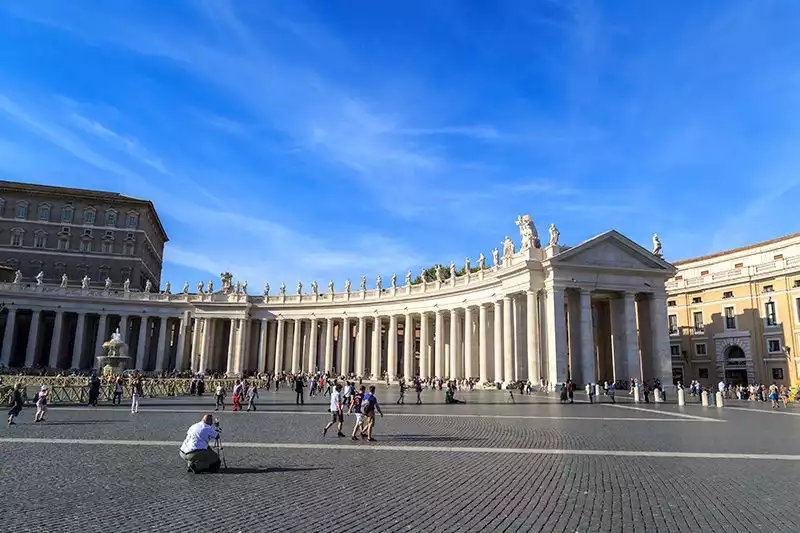
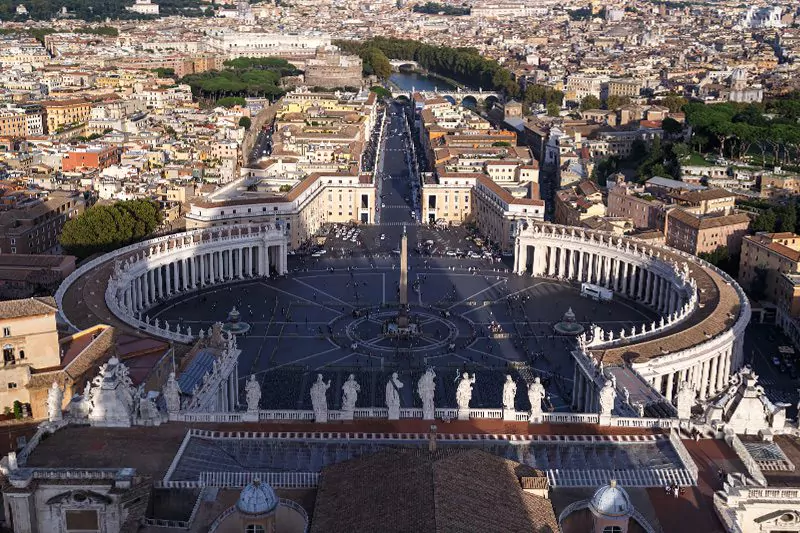
After waiting for our turn and getting our tickets, we get on the elevator. The elevator attendant takes the elevator to the 4th floor and drops people off. Here you have the chance to watch the basilica from above, albeit through a wire cage. We move on and start climbing the narrow and numerous stairs for one person. After climbing the stairs, which are sometimes inclined and sometimes high because we are climbing towards the dome, we go to the open area, which is more airy than the stairs, which offers a view of Rome and the Vatican. The place is crowded. We shoot among the crowd for about 15 minutes and descend 551 steps to enter the basilica.
To enter the basilica, make sure you are wearing short shorts and no cleavage. They are very strict about this and may not let you in. Once inside, remember that you are in the largest church in the history of Christianity. Realize how small the people in such a big church look.
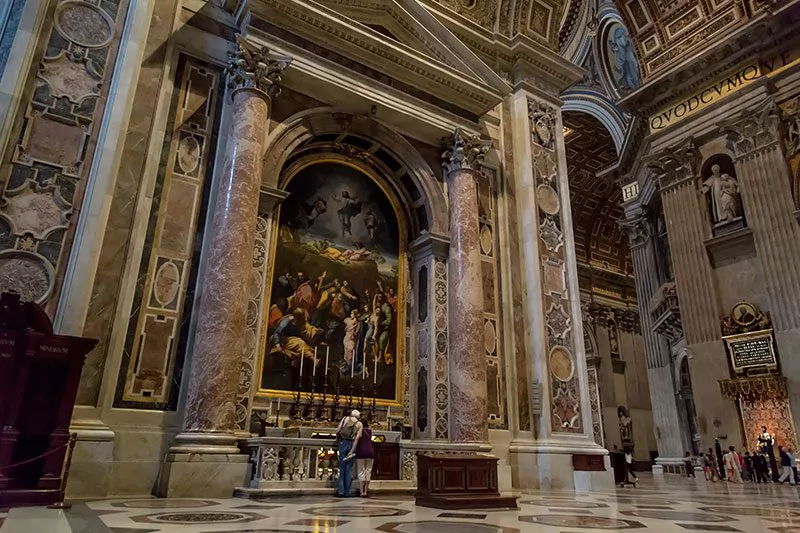
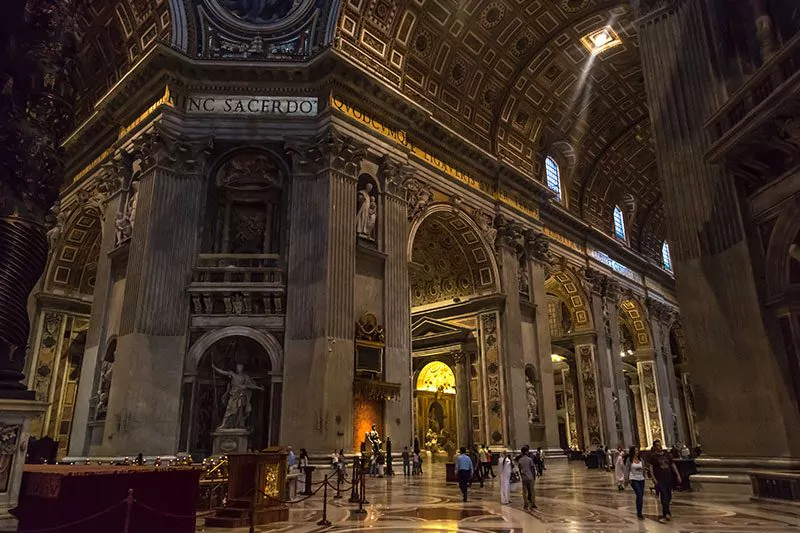
As it is evening time and towards the end of the visiting hours, the security guards inside start to let the visitors out slowly. For this reason, it is useful to know your visiting hours. When you go outside, you can take sunset photos of the Vatican.
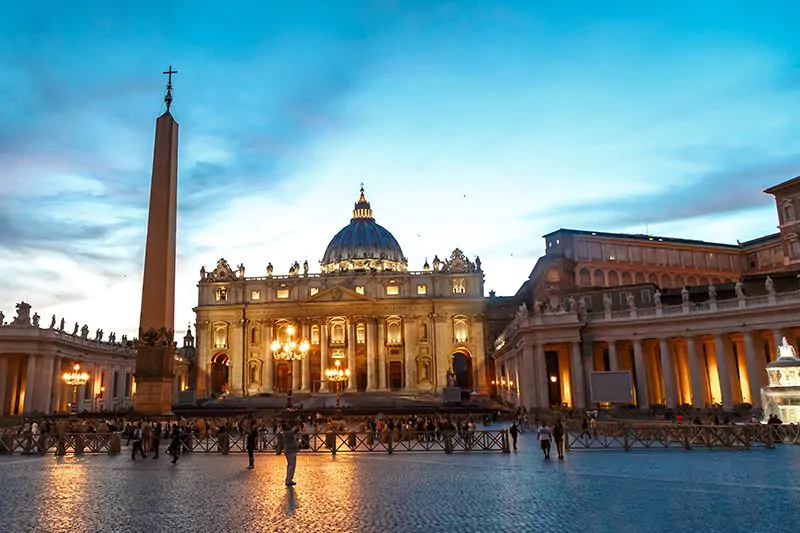
Day 1 of our Rome tour was very productive. The sun is about to set and if you want, you can see historical buildings like the Pantheon in the evening light.
Rome Itinerary: Day 2
Domus Aurea
We get up in the morning and the first thing we do is to move to another must-see part of Rome. First of all, we go to the Parco Del Colle Oppio park located on the Oppian hill. This was used as a recreational complex of the ancient times. In 64 Rome was destroyed in a fire and the Roman Emperor Nero built a large villa on this site.
After Nero’s death, Trainus covered this area, which was known as Domus Aurea, meaning “Golden House”, with earth and began to build Trajan’s baths, which were very large by ancient Roman standards. It is possible to come across the remains of the baths during your visit to the park. The architect of the baths, inaugurated in 109 AD, was Apollodorus of Damascus.
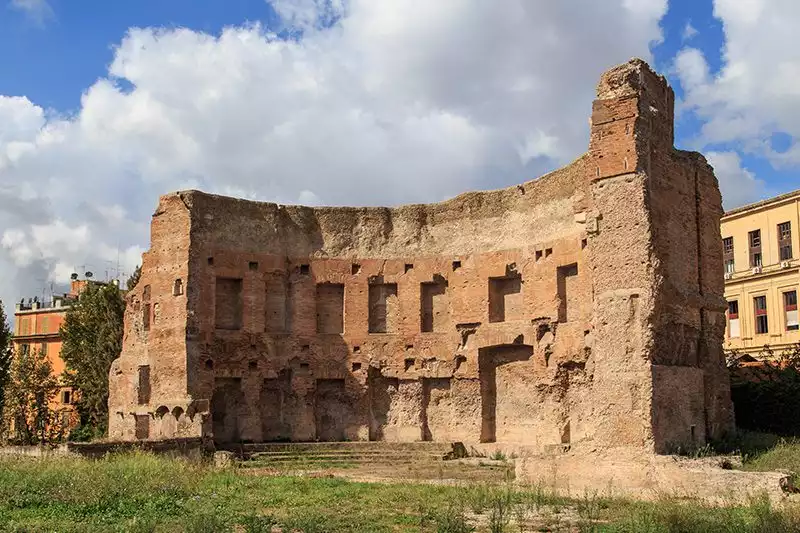
Tours of Nero’s Golden House are organized at various times and the underground Domus Aurea and the rooms of the palace can be visited with a guide.
Colosseum
After leaving this park, we go down to the heart of Rome and go to one of the most popular tourist sites in Italy, the Colosseum. It is already quite close. But the long queues at the entrance don’t bother us. Because we have a Roma Pass and the first two points you use the Roma Pass can be visited for free. So we use one of the rights of our Roman Pass to enter the Colosseum and quickly pass through the turnstiles that only Roman Pass holders use.
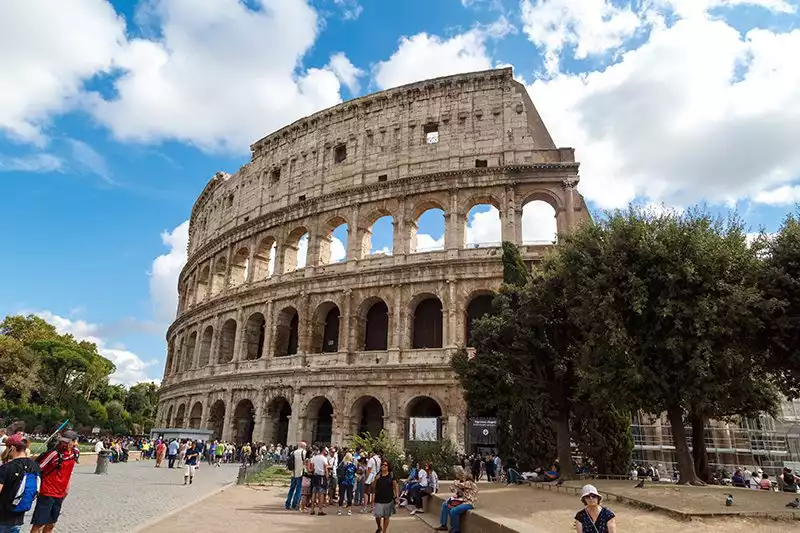
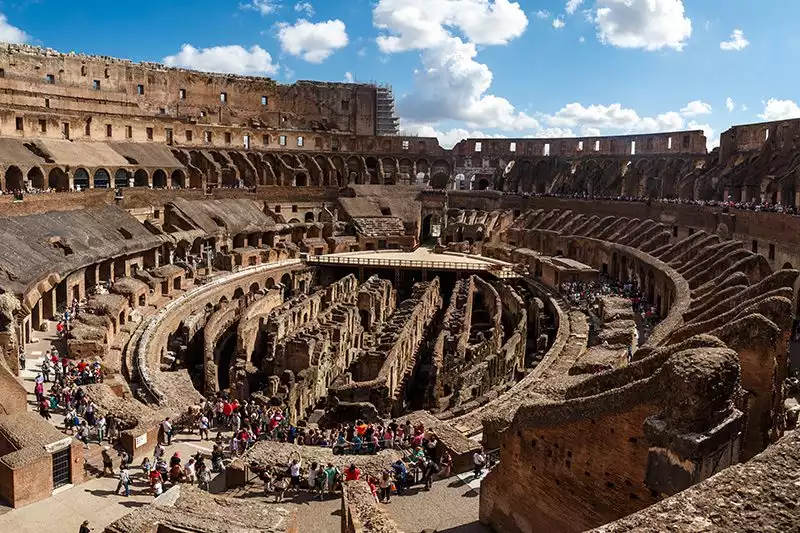
The Colosseum is an arena whose name we associate with gladiators. Here, for the emperor’s pleasure, many gladiators tried to survive by fighting each other or starving animals. These fights ended when Emperor Constantine converted to Christianity.
Triumphal Arch of Constantine
After a two-hour visit to the Colosseum, we let ourselves go with the flow of history and go to the Triumphal Arch of Constantine in the garden of the Colosseum. Erected in the 4th century to celebrate the victory of Emperor Constantine, the triumphal arch was erected to remind both the Roman people and the enemies of the victory.
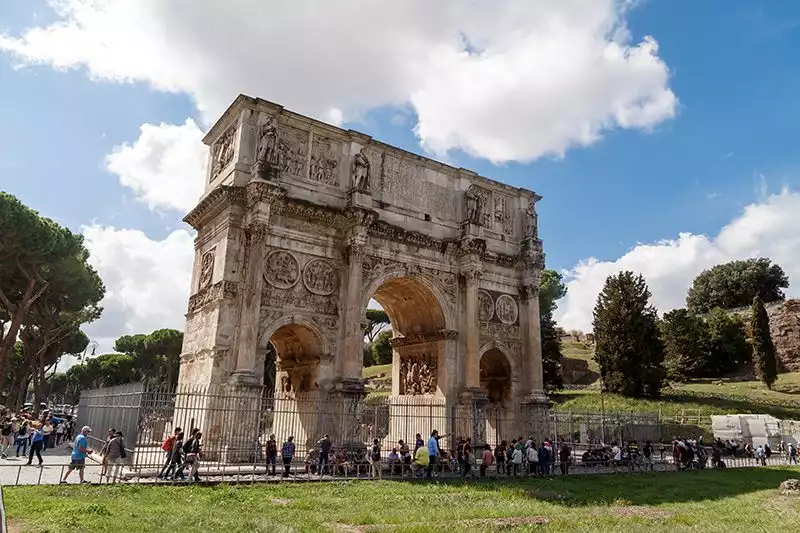
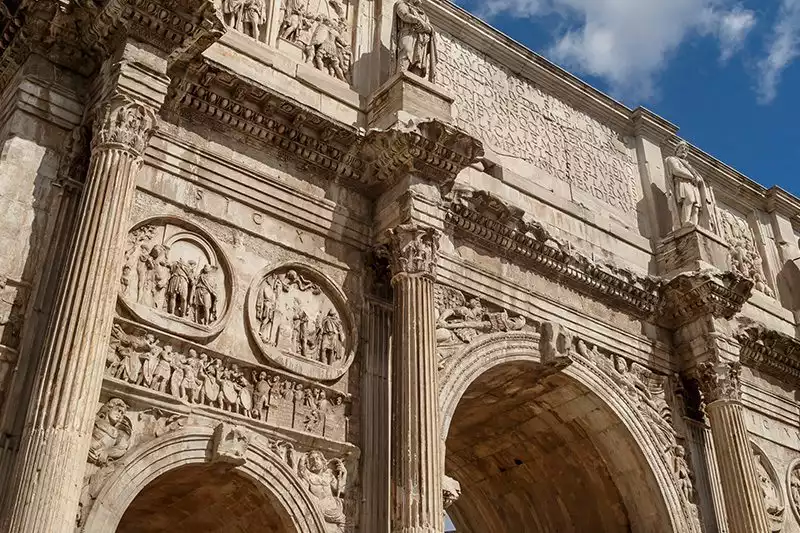
On the other side of the Triumphal Arch of Constantine is the Roman Forum. The original name of the Roman Forum, the center of ancient Rome, is Forum Romanum. Those who enter the Colosseum with a Roma Pass can enter the Roman Forum for free. There are many monuments and buildings here. We can better see how the city center was used in Ancient Rome thanks to the surviving structures.
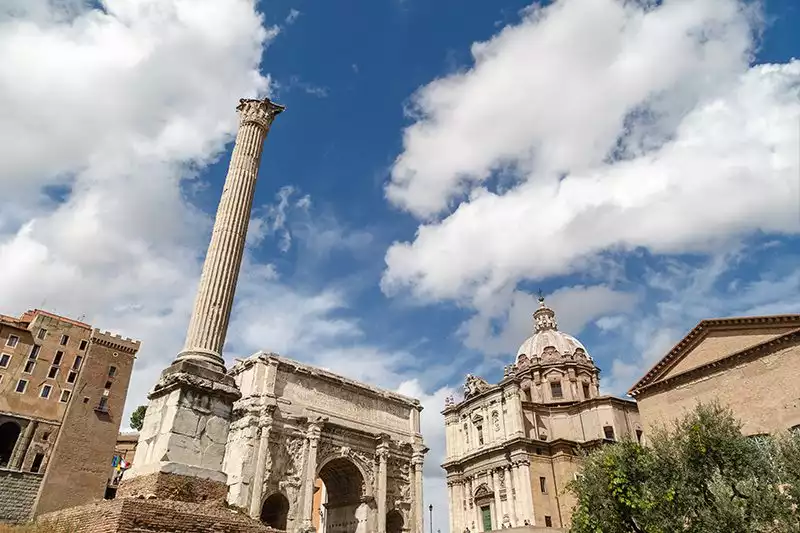
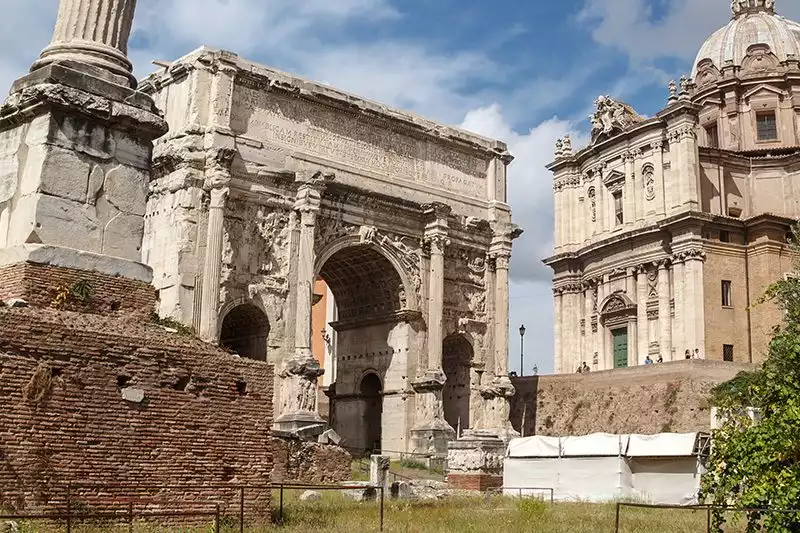
Palatino Hill
Palatino Hill, one of the seven hills of Rome, is also located in this area. Without leaving the Roman Forum, you can go up to the Palatino Hill via a staircase on the side. After spending about two hours in this area, we move towards Galeria Borghese.
Galeria Borghese
Galeria Borghese, located in the continuation of the Pincio gardens, which we went to the side of Piazza del Popolo square we visited yesterday, is located in wonderful lush gardens. There are also paintings by the famous sculptor Bellini and painter Caravaggio. However, we didn’t enter this place because we needed a reservation to enter. Even if you don’t enter, be sure to take a walk in the gardens of Villa Borghese.
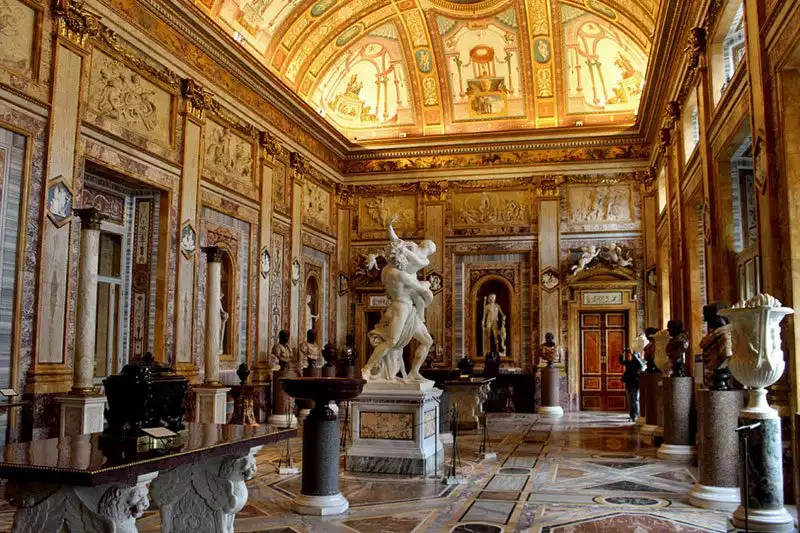
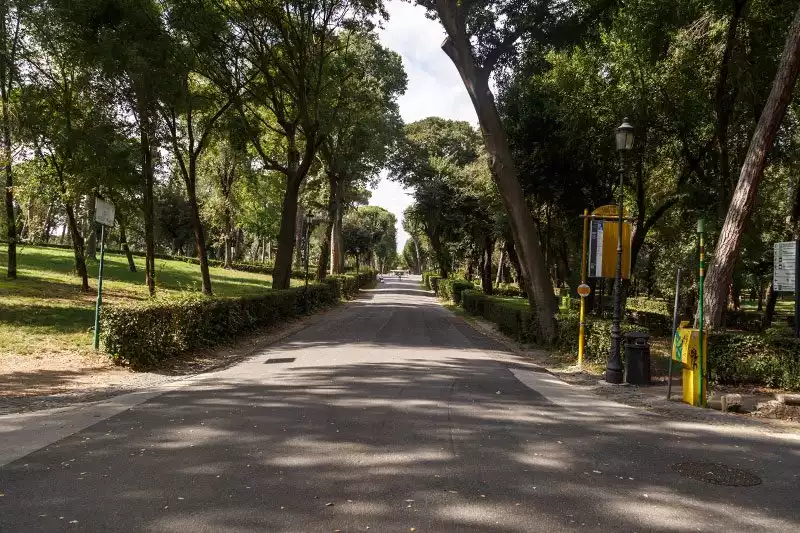
If we continue on our route, 500 meters to the left in front of the Galleria Broghese, you will come to the Roma Zoo.
As we continue down from the zoo, a big white building welcomes us at the end of the road. The National Gallery of Modern Art, one of the best modern art museums in Rome, exhibits many paintings by famous artists such as Umberto Boccioni, Van Gogh, Rodin and Antonio Canova. This museum will also be of interest to painting lovers.
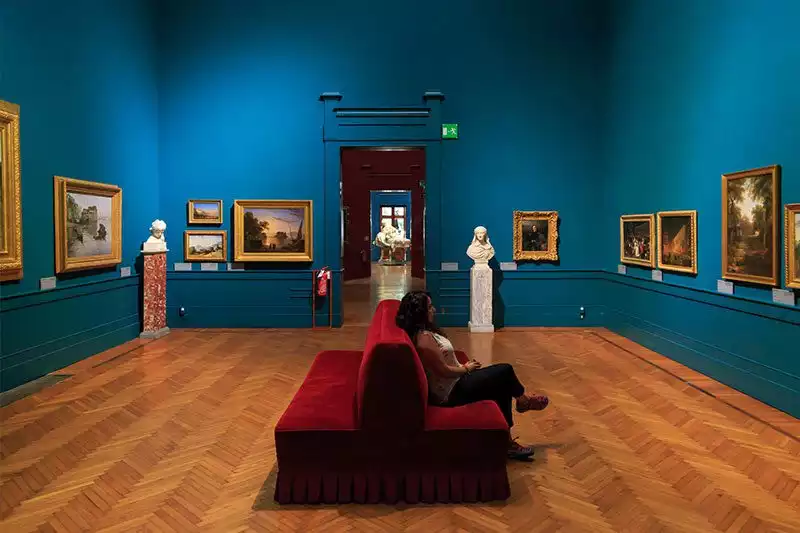
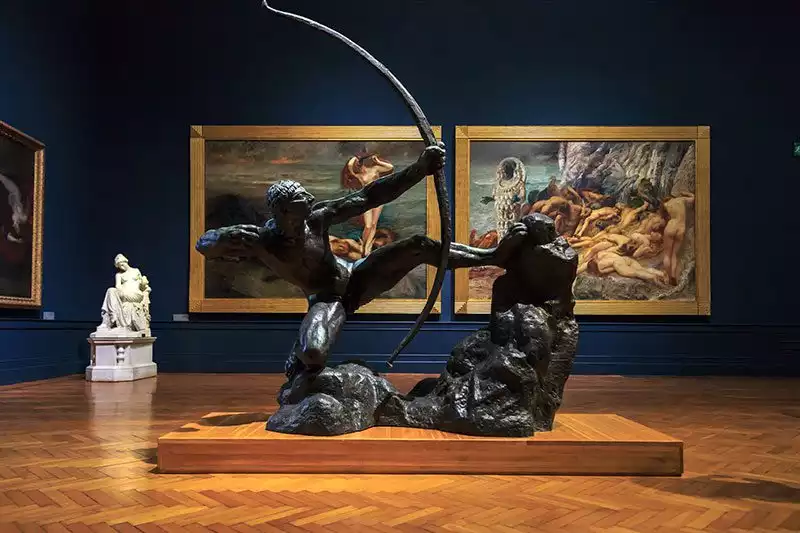
Today we went down to the center of Rome and took a close look at the Colosseum, Constantine’s triumphal arch, the Roman Forum, the beautiful gardens of the Borghese Villa and ended the day at the Rome Museum of Modern Art.
Rome Itinerary: Day 3
We aim to spend the 3rd day of our Rome trip to the fullest. In the morning, we get up as early as possible and head to the Vatican. The earlier we go, the earlier we will be let in. This means we have to manage our time well throughout the day.
Vatican Museums
Vatican Museums, which we did not enter the other day, is the first stop of today. Before entering the Vatican Square, let’s find the Vatican entrance by going past the high walls on the right turn. Most probably the long queues you will see will be the entrance queue of the Vatican Museums. If you don’t want to wait in these queues, you can make an online reservation online and get a fast pass. Rome Pass is not valid here.
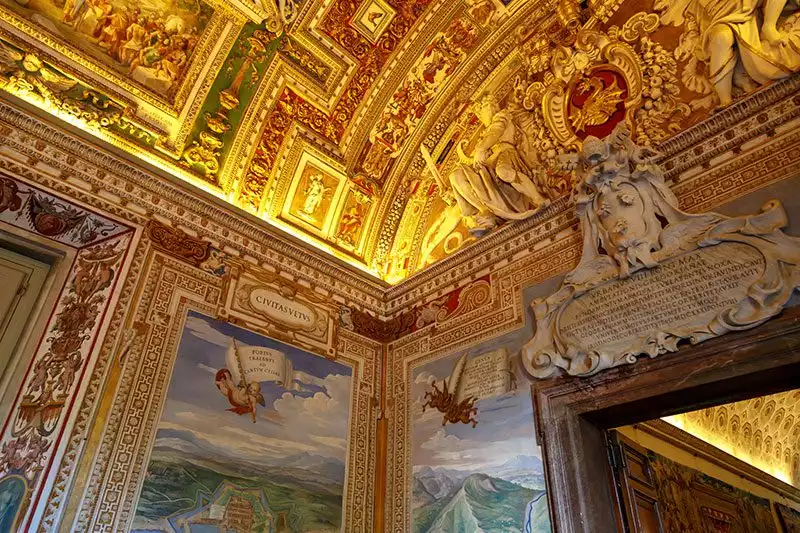
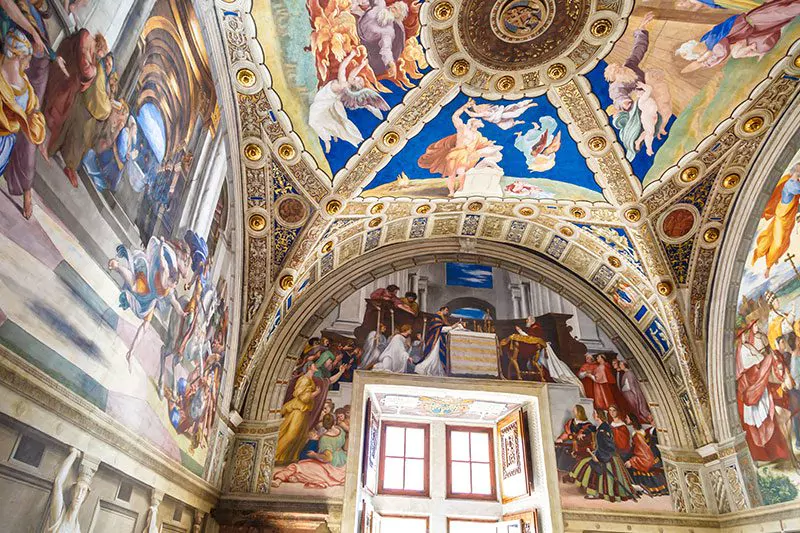
The Vatican Museums are very rich in content. You will see plenty of sculptures and works of art. It is impossible not to admire the murals painted by the painter Rafael. Then you will visit the Sistine Chapel, which will make you leave the Vatican with your mouth open. The Sistine Chapel is also included in the entrance fee. We have covered the Vatican Museums in a different article in order to be more detailed and organized.
Castel Sant’Angelo
After visiting the Vatican Museums, we go to Castel Sant’Angelo, which was once used as the Papal headquarters and later as a prison. Originally built as Hadrian’s Mausoleum, the castle later changed its purpose and served as a defense fortress. When you enter Castel Sant’Angelo, make sure to climb to the top of the castle where the angel statue is located and see the Sant’Angelo Bridge, which has the same name as the castle, from above.
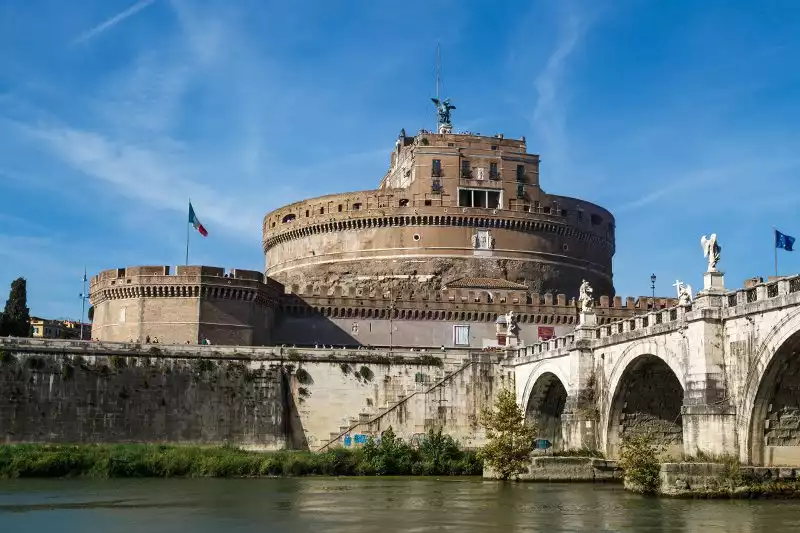
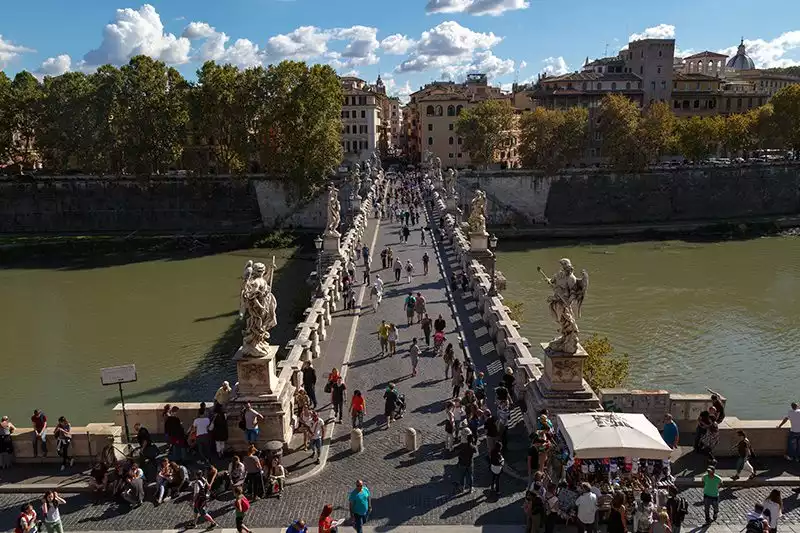
Most of our time was spent at the Vatican Museums and Sant’Angelo Castle. Since these two were time-consuming enough, we planned to spend the afternoon at the Spanish Steps, one of the best places to see the sunset. Don’t forget to bring something nice to drink as the sun goes down.
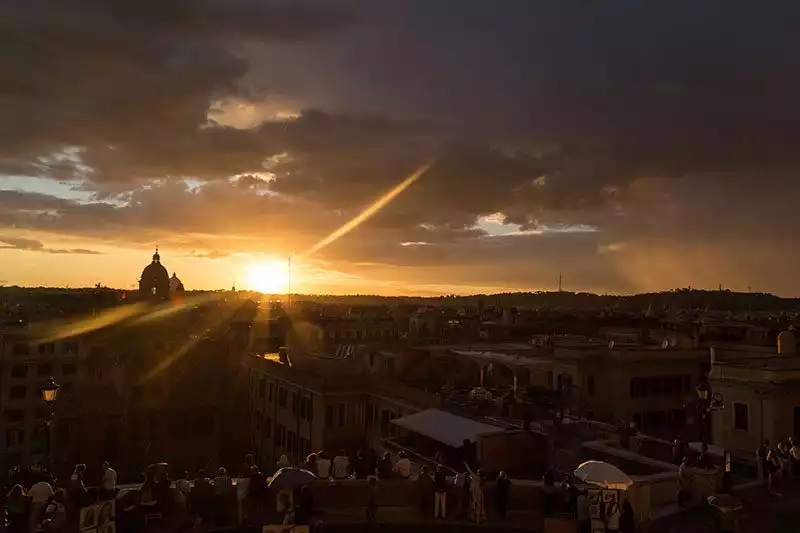
Rome Itinerary: Day 4
On the 4th and last day in Rome, we will try to complete the rest of Rome’s sightseeing. Our day starts in Piazza Navona. We’ve been here before, but we haven’t really focused on the buildings around it.
Piazza Navona
Piazza Navona is a very active square all the time and if you pay attention, it has a long and thin structure. This was used as a stadium in Ancient Rome. This 30,000-seater stadium was demolished after Pope Innocent X took over. The square of the stadium was left empty, but various buildings have risen around it.
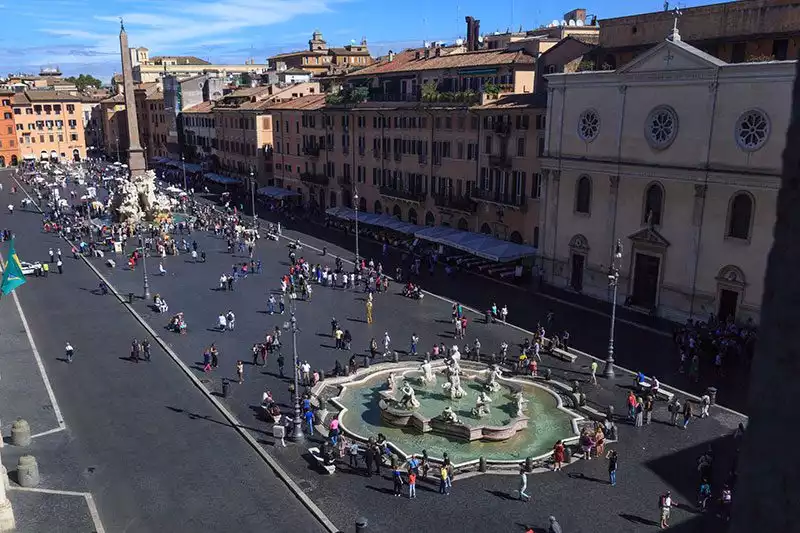
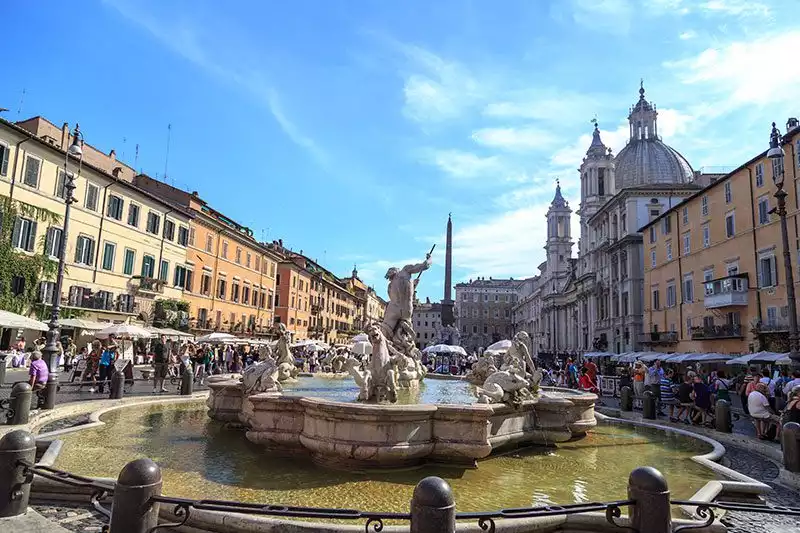
The remains of the stadium can be seen in the Stadium of Domitian Museum, which is located behind the end of the square. In addition to the remains of the stadium building, the findings and artifacts from the stadium excavations are also exhibited here.
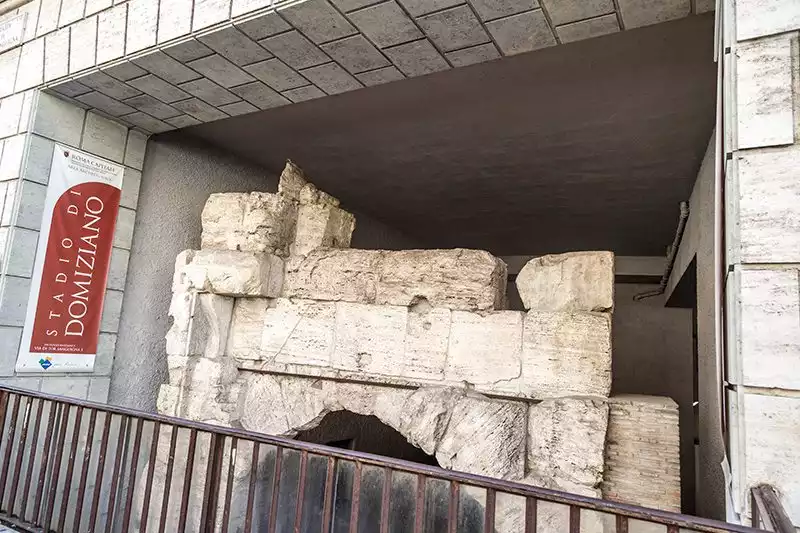
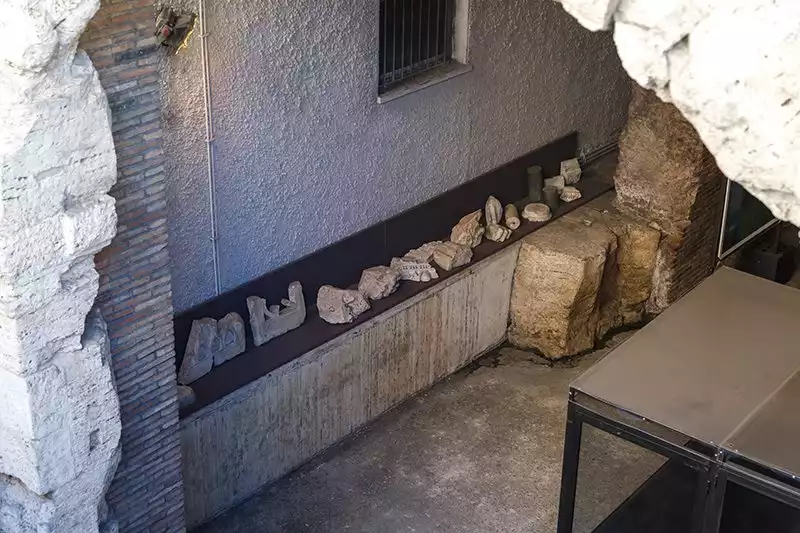
In the center of Piazza Navona is the Church of Sant’Agnese in Agone. Built in the 17th century, it was used as the personal chapel of Pope Innocent X, the leader of the time.
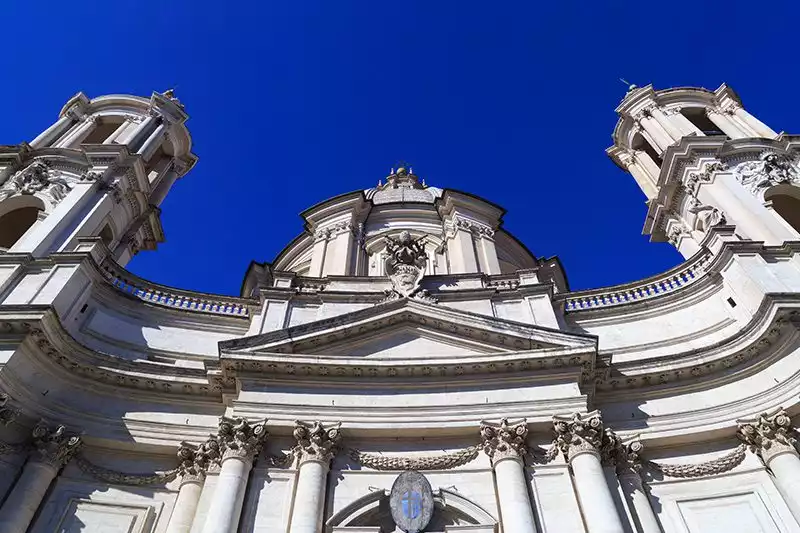
Let’s follow the Tiber River and examine the constructions on the small island on the river. The island in the middle of the Tiber River is called Isola Tiberina (Tiber Island). Then, let’s continue towards the church of San Nicola in Carcere (St. Nicholas in Prison). I want you to see this church because there is a church built on a temple. You can see the ruins of the temple on the side of the entrance to the church.
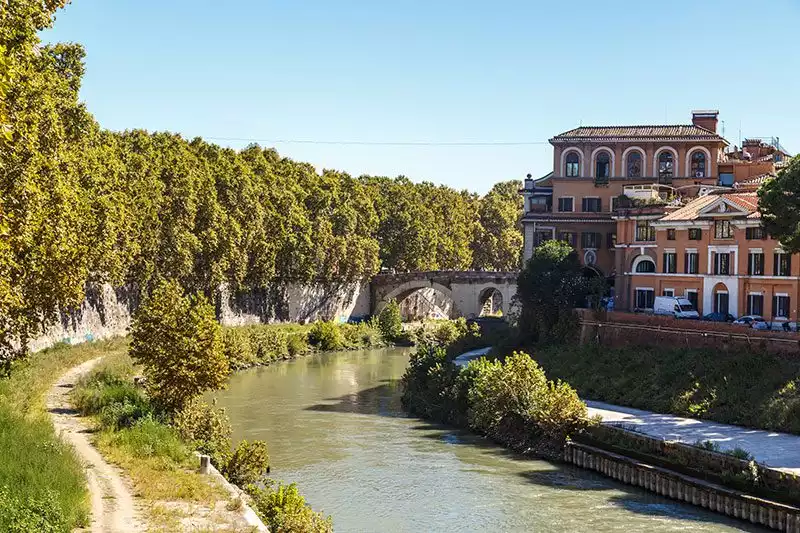
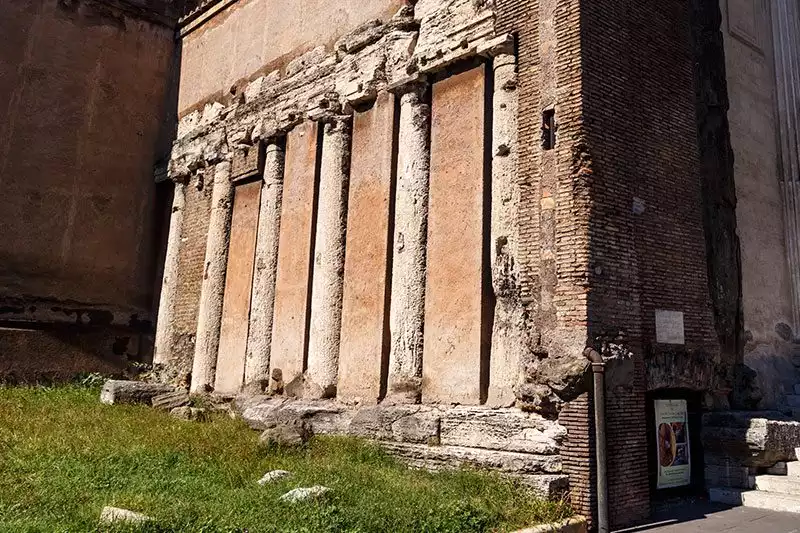
When you continue from the church, you will see an ancient Roman theater on your left. Named after Marcus Marcellus, nephew of the Roman Emperor Augustus, the Marcellus Theater dates back to 13 BC. With a diameter of 111 meters and a capacity of 11,000 people, it is almost a miniature of the Colosseum. Today, the upper part of the theater is divided into apartments. The column right next to the Marcellus Theater belongs to the Temple of Apollo Sosianus. Only three of its columns have survived today.
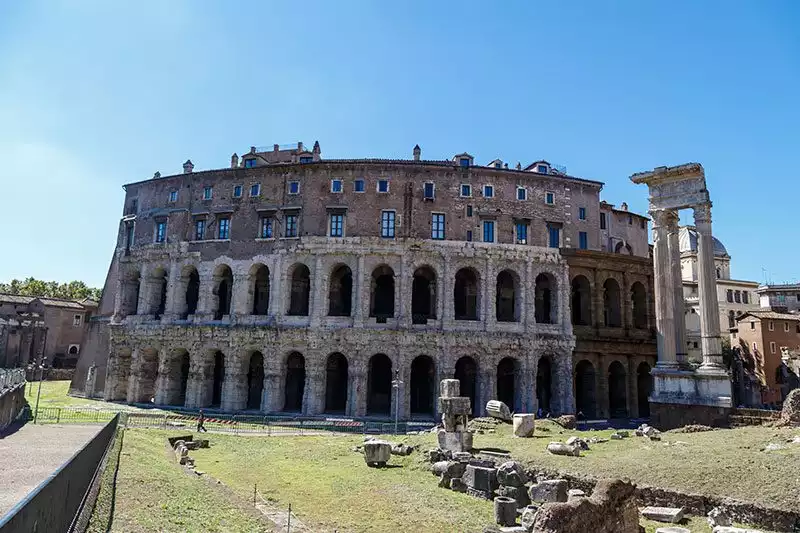
We are on Via del Teatro di Marcello. We continue through the Theater of Marcellus. The big white marble monument on the left is the Vittoria Emanuele II monument, we will come to it later. Next to it, at the top of the stairs, is the Basilica of Santa Maria in Ara Coeli. This is a 12th century basilica. You can visit inside.
Cross to the other side of the church through the narrow area between the church and the Emanuele monument and observe the forums from above, which we will visit closely in a moment.
At this point, you can take the elevator behind Vittorio Emanuele to the top of the monument and watch Rome from above for a few euros.
We go back down the stairs leading to the church and enter Piazza del Compidoglio by taking the sparse stairs called Cordonata on the left. The reason for the sparse stairs is so that the horsemen who want to reach the top don’t have to get off their horses.
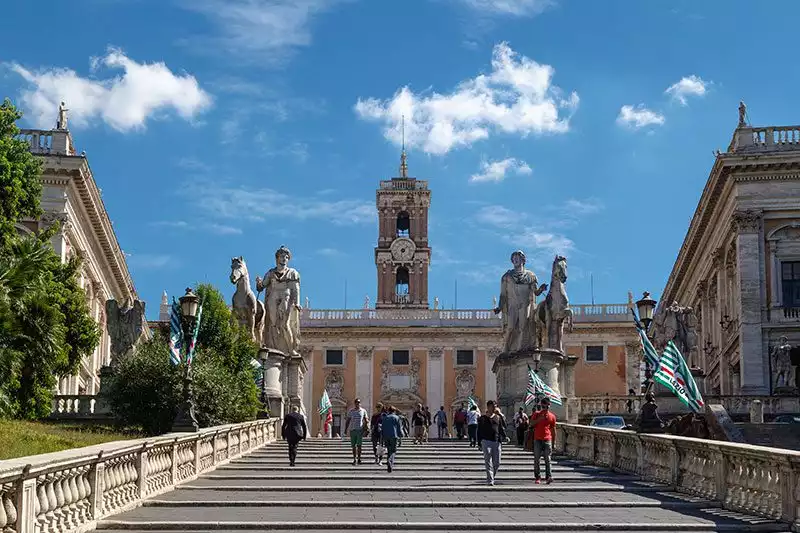
Piazza del Compidaglio is one of the 7 hills of Rome and the work of the famous artist Michelangelo. In the center is the statue of the Roman Emperor Marcus Aurelius. The original was moved to the Captoline Museum in 1981. This museum is one of the buildings in Piazza del Compidaglio, also in the square.
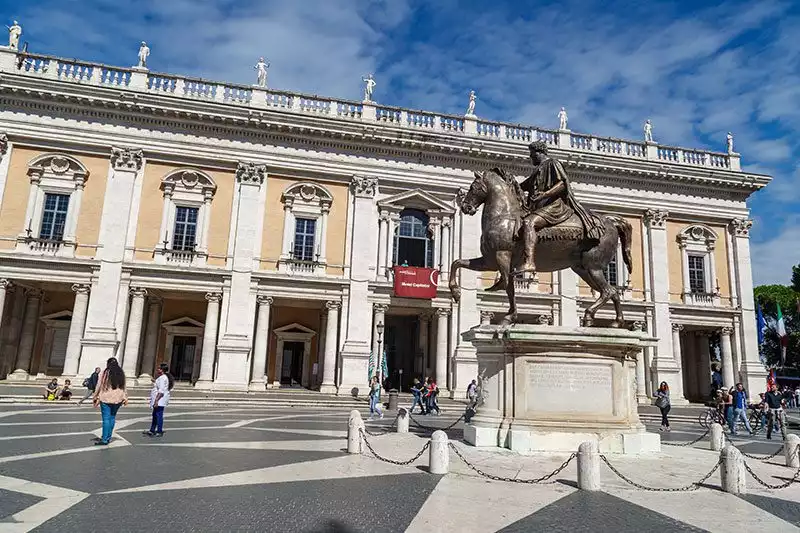
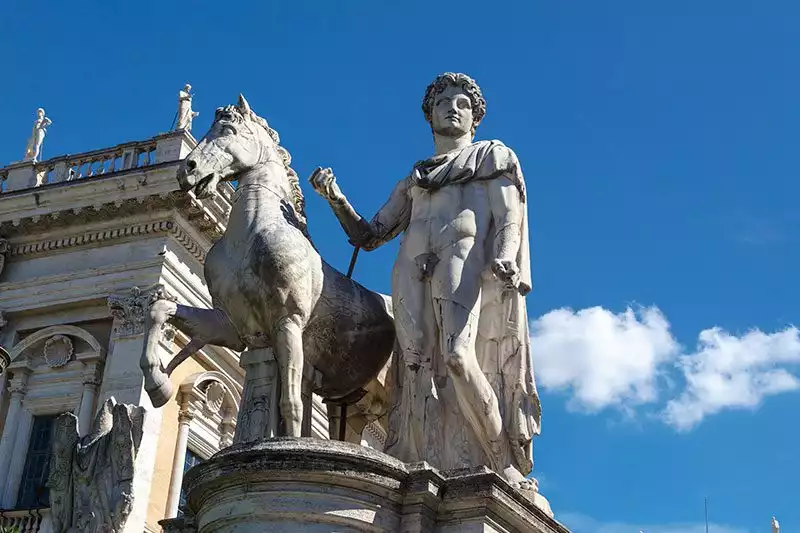
Roman Forums
We continue on the left by going down the stairs. We will keep the Roman Forum on our right. We will take care of the opposite side of the highway. Every leader who came to power built a forum for himself and thus several Roman Forums emerged.
The Forum of Caesar, the Forum of Augustus, the Forum of Nerva and finally the Forum of Trajan with the obelisk. Although most of these buildings have been destroyed, the Trajan Market, where shopping took place, is the best surviving structure. Together with the tall Trajan’s Column, of course.
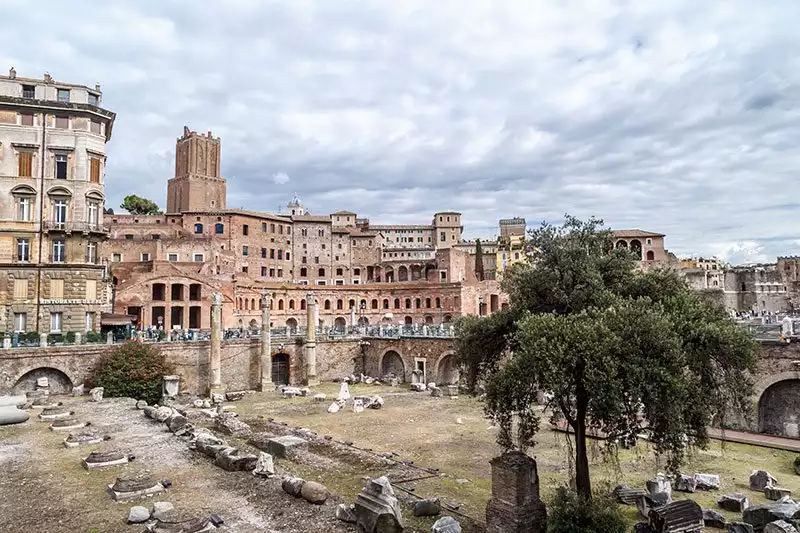
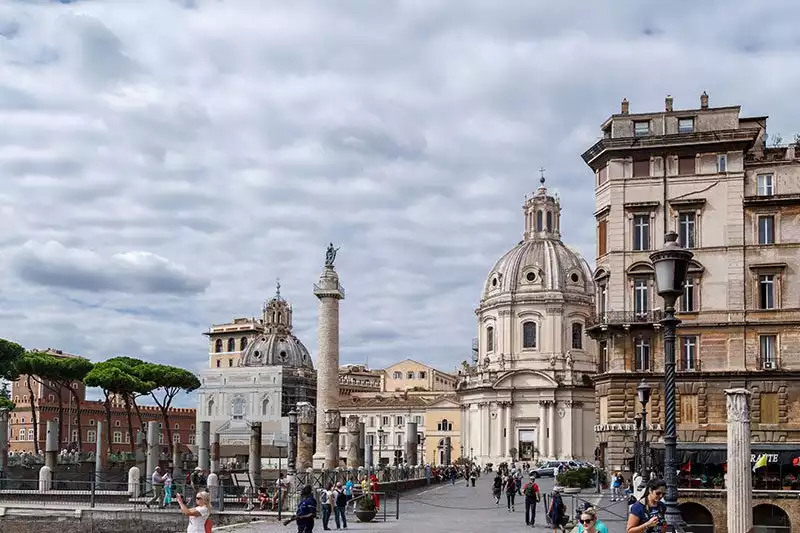
Vittorio Emanuele II Monument
After passing Rome’s famous forums, it was time to see Emanuele’s monument. This huge structure is a monument dedicated to Vittorio Emanuele II, king of Italy. There is also a museum about the history of Italy and Vittorio, called Museum of the Risorgimento.
At the top of the Vittorio Emanuele II monument you can see people. You can climb up here. For a certain fee, you can take the elevator behind the monument to the top and watch Rome.
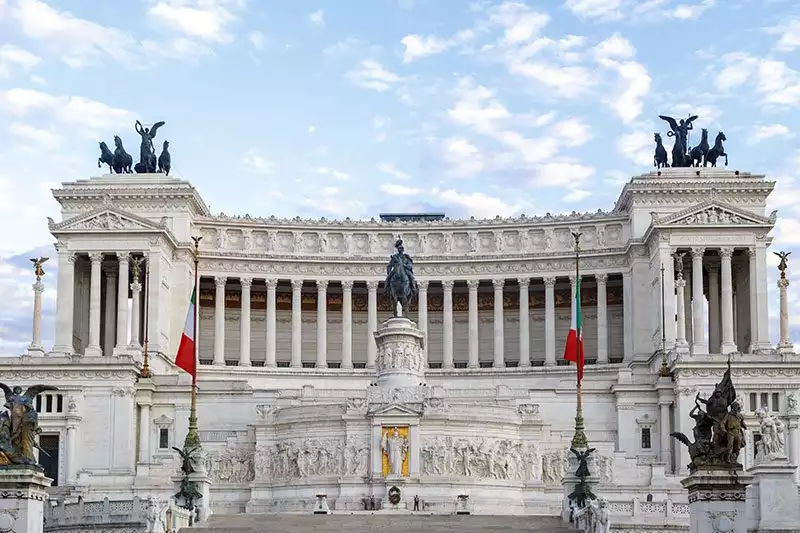
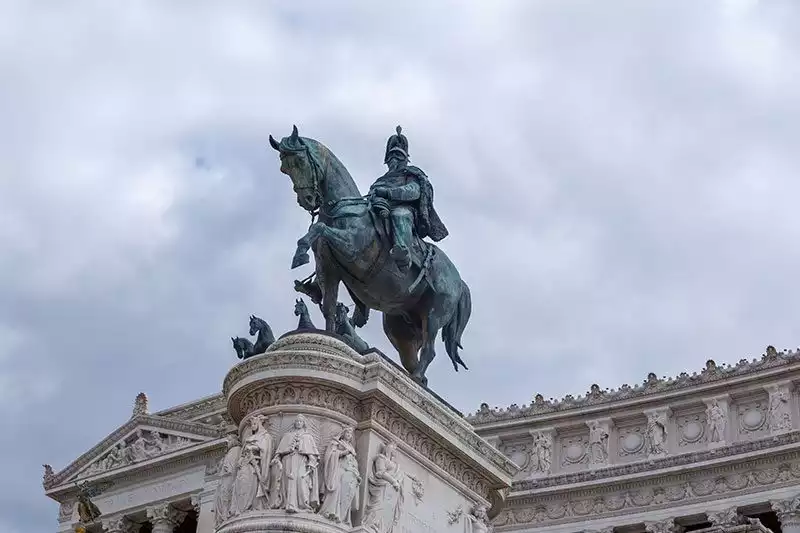
During our trip to Rome, we walked many kilometers and visited almost all of it properly. Except for a few places inside and outside the center of Rome, we can say that we completed Rome in 4 days with a good planning.
